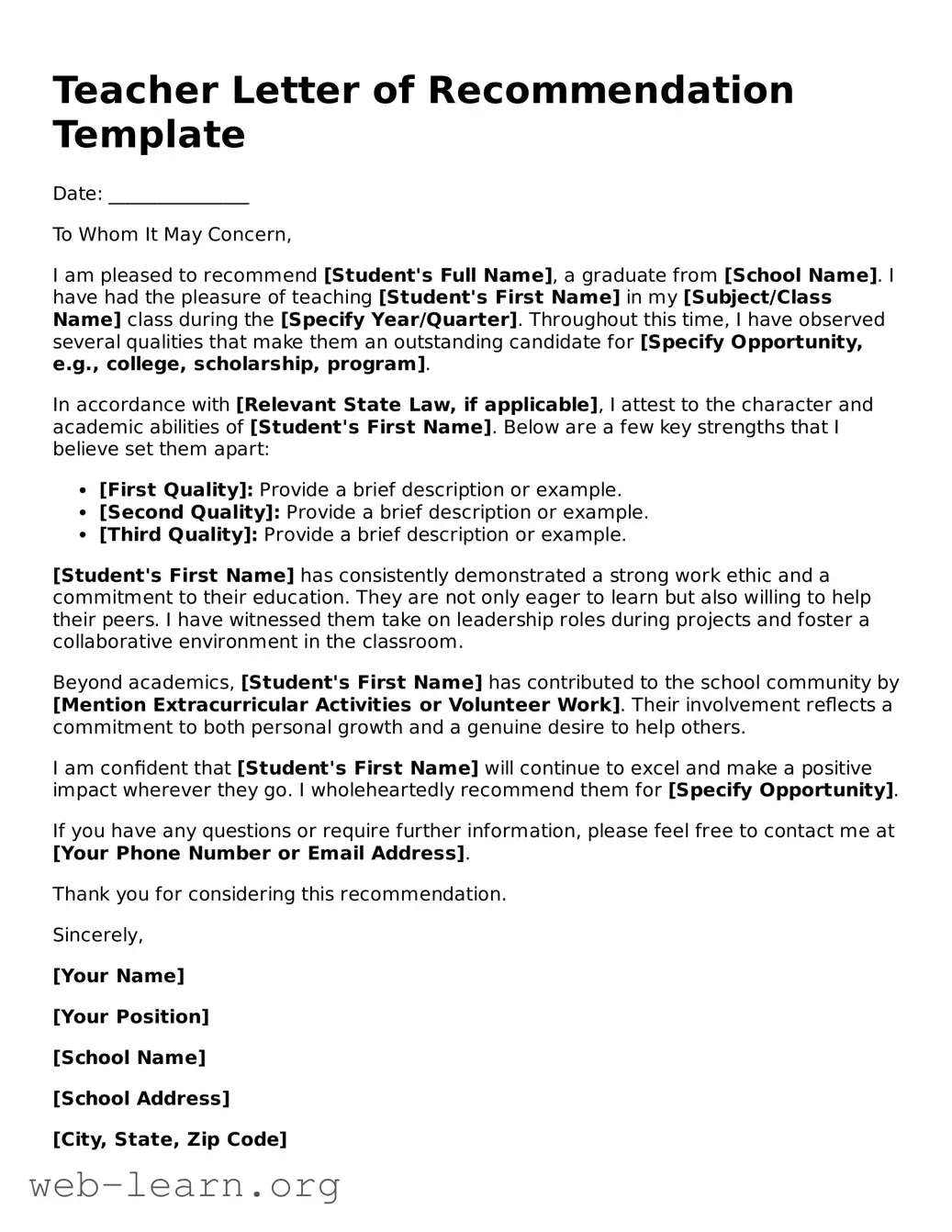Teacher Letter of Recommendation Template
Date: _______________
To Whom It May Concern,
I am pleased to recommend [Student's Full Name], a graduate from [School Name]. I have had the pleasure of teaching [Student's First Name] in my [Subject/Class Name] class during the [Specify Year/Quarter]. Throughout this time, I have observed several qualities that make them an outstanding candidate for [Specify Opportunity, e.g., college, scholarship, program].
In accordance with [Relevant State Law, if applicable], I attest to the character and academic abilities of [Student's First Name]. Below are a few key strengths that I believe set them apart:
- [First Quality]: Provide a brief description or example.
- [Second Quality]: Provide a brief description or example.
- [Third Quality]: Provide a brief description or example.
[Student's First Name] has consistently demonstrated a strong work ethic and a commitment to their education. They are not only eager to learn but also willing to help their peers. I have witnessed them take on leadership roles during projects and foster a collaborative environment in the classroom.
Beyond academics, [Student's First Name] has contributed to the school community by [Mention Extracurricular Activities or Volunteer Work]. Their involvement reflects a commitment to both personal growth and a genuine desire to help others.
I am confident that [Student's First Name] will continue to excel and make a positive impact wherever they go. I wholeheartedly recommend them for [Specify Opportunity].
If you have any questions or require further information, please feel free to contact me at [Your Phone Number or Email Address].
Thank you for considering this recommendation.
Sincerely,
[Your Name]
[Your Position]
[School Name]
[School Address]
[City, State, Zip Code]
